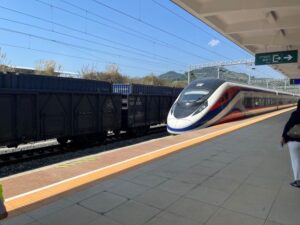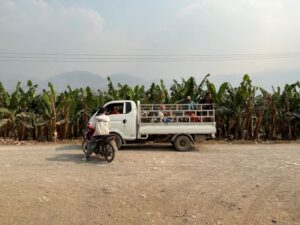ミャンマーの茶園地域における持続的植生管理及び植物利用に関する研究/ミャンマー・タイ・ラオス茶園地域概査
対象とする問題の概要 ミャンマーの森林は減少・劣化の一途をたどっており、特に森林減少・劣化が激しい地域における森林保全対策の検討が喫緊の課題となっている。本研究では、下記の点に着目し、保全対策立案にむけて課題に取り組む。 1. 特に森林減…

Banana investment is the largest fruit investment in Laos, mainly supplying the Chinese fruit market, and most of the investors are also Chinese. At its peak in the past, Laos had around 40,000 hectares of bananas, mainly concentrated in the north. Then severe pollution and a series of conflicts and problems led to the ban on bananas in 2016. Coupled with fluctuating market prices, many aspects of banana investment in Laos have changed. Only around 20,000 hectares of bananas remain, and the distribution area has gradually shifted southwards from the original north. But after 2016, little attention has been paid to the changes in Chinese banana investment, especially in Luang Namtha province, the border province between China and Laos, where the ban on bananas began. Luang Namtha province has long historical ties with China, being the place where rubber was first introduced in the 1990s and where banana investment first began to appear. At the same time, Luang Namtha province contains and manages the land border ports-Boten Port, through which almost all goods destined for China need to pass and is the most important land port between China and Laos. During Covid-19, the restrictions and closures of Boten port resulted in a large number of fruit investors suffering losses, such as bananas and watermelons. Luang Namtha is therefore a key area to investigate the history and development of Chinese banana investment and will help to understand more deeply the transformation and development of Chinese banana investment in Laos.
The main purpose of this study is to investigate the province most affected by the ban on bananas in Laos in 2016 as well as the province with the Boten port – Luang Namtha. The main focus is on the historical changes as well as the development of banana investment in this area. It also focuses on how the key part of banana transportation takes place at the Boten port, and what changes in the port border took place after the end of China’s Covid policy.

This study focuses on the history and development of Chinese banana investors as well as observed the impact of agricultural investments in other crops, such as cassava and sugar cane, on banana investments. Therefore, apart from natural disasters and market factors, what kind of crop will have an impact on Chinese banana investment, and in what way, and with what results, is something to watch in the future.
Copyright © 附属次世代型アジア・アフリカ教育研究センター All Rights Reserved.